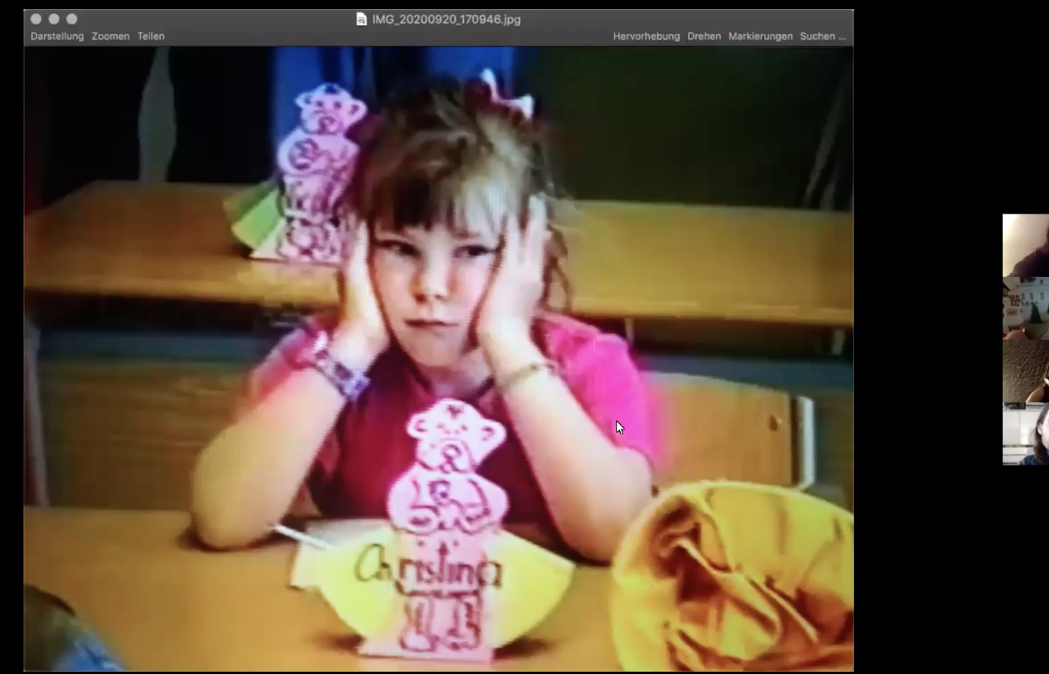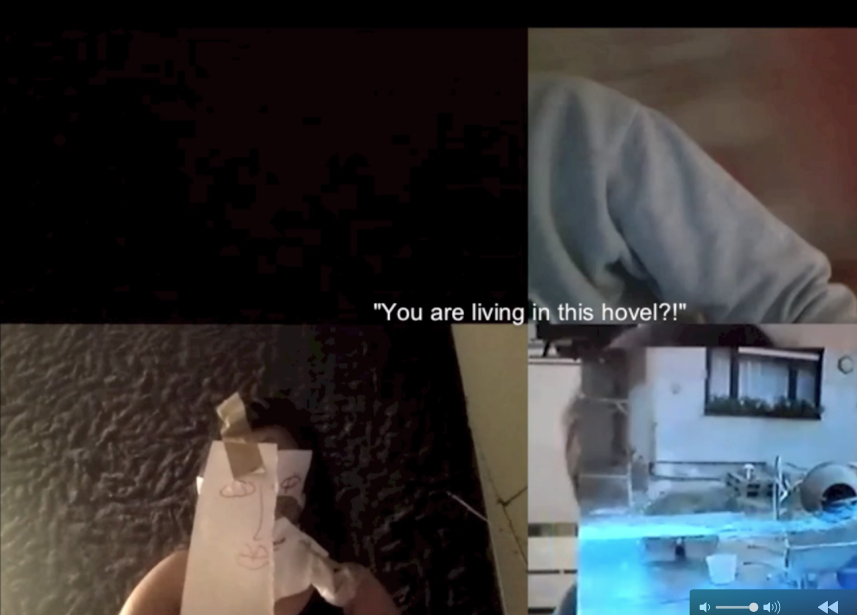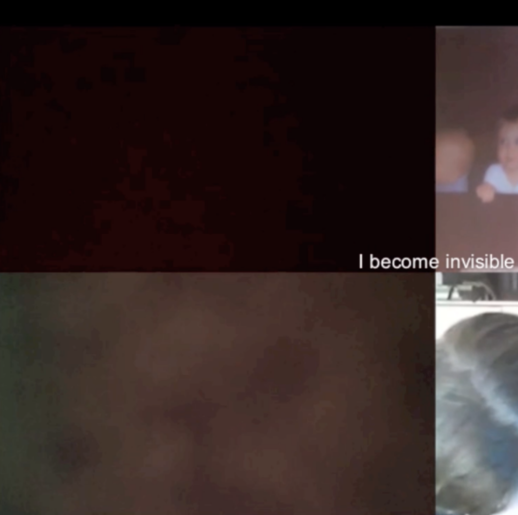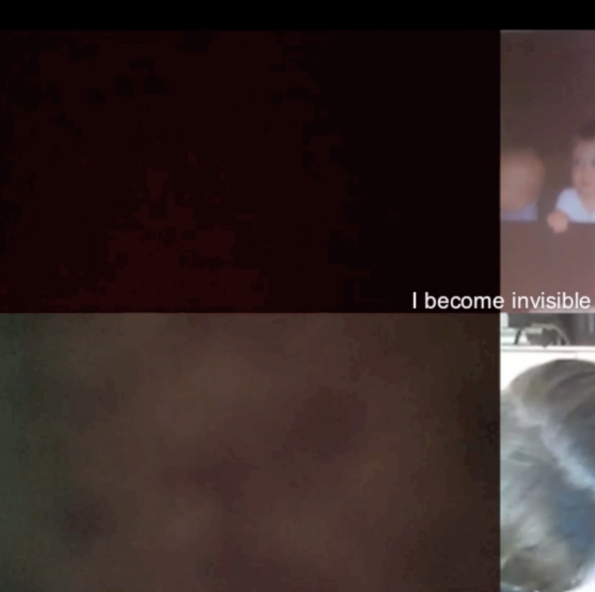Shame cuts deep, it is linked to our identity, which goes beyond the occasional embarrassment of a faux-pas. We came to understand these signals of shame as not so much trained and/ or learned reactions – to appease, to disappear –, but as a practical, inscribed implicit knowledge, that is socially utilized. Those gestures of shame and the memories linked to it, often revolving around class and social standing – of perceived non-normativity to certain social class standards – , can be read as physical and psychological solidifications of class boundaries. Shame functions as a directional guide leading to the (un-)conscious borderlines of cultural appropriateness.
Shame develops very early in the childhood, it can even be transgenerationally passed on, of course again depending on the culture. Those who experience shame want to hide or flee, it is described as a very narcissistic emotion, a divisive one (cf. Marks). Counteracting, it can lead to a variety of expressions – projections onto others, shaming others, cynicism, anger, self-abandonment, extreme ambition, emotional numbness, to only name a few (ibid.)
Shame points to a deficit, a deviation of the self from the perceived ideal. It can be triggered by a denial of recognition, a violation of personal boundaries, exclusion and marginalization, a violation of one’s own values. All of those, it is pointed out by sociologist Stephan Marks, are ancient means of domination and order (ibid.).
Our first research project Confronting Realities - First Steps on cinematic autosociobiographies (Wolfram, Wintersteiger et al. 2020), which led to (Not) Entering Every Room, began in the fall of 2018 and ran for a year. It will also be continued as a larger-scale research project, funded by the Austrian Science Fund FWF/PEEK (start fall 2021). Confronting Realities was conducted by a team of film scholars, artistic researchers and filmmakers at the mdw / Institute for Film – Film Academy Vienna.
In a collective approach we started to explore different sociobiographies and the way social class and experiences of privilege and marginalization are inscribed into biographies – into conceptions of selves, into bodies and ways of being. At the same time we started to map out possible cinematic autosociobiographic narratives and forms.
At this point we think it is important to contextualize our interest in social classes, its inscriptions on and into the body, but especially its impact on what we deem possible and impossible for “us” in our lives – according to how we define and frame this “us”. What rooms are open for “us” and which aren’t?
We believe that now, in times of a worldwide shift to the right marked by a rise in nationalism and populism (cf. Manow 2018), the question of social classes and its cultural, economic and political changes, including their established (im-)possibilities have once again become topical – even crucial. Along with this goes the ever-increasing national and global inequality (cf. Piketty 2020) that polarizes and fuels conflicts. One of our underlying questions is the question of populism and nationalism. We think that probing the methodology of autosociobiographical exploration (be it cinematic, be it literary, be it musical, …) can indeed offer additional insights to research on this matter and the relation to class-related shame that leads to resentment and polarisation (Dörre/Castel 2009; Russel Hochschild 2016).
Social class is a multifaceted, complex concept and construct and there are many ways to approach it, one research has particularly interested us and shaped our understanding of social class and its implications in the Western World: The Society of Singularities (2017) by German sociologist Andreas Reckwitz and his description of a 3 plus 1 model of social classes. In his theory, Reckwitz defines and describes a new middle class ("creative middle class"), an old middle class threatened by social decline and societal insignificance, a precarious lower class and a distanced upper class no longer connected to the other classes on several levels of life. Reckwitz describes the so-called new middle class in detail, based on differences in lifestyle (type of living, food and leisure activities), and sees them as an offer of identity for a newly emerging social stratum of "creative", flexible and often precariously living people - which highly resonated with us.
In an attempt to somehow grasp these changing class dynamics and to reflect on our own implicit class memory that is the filter through which we see and explain the world surrounding us as well as our research, we turned to autosociobiographies as a means of exploring our class dynamic. We chose an artistic approach in understanding this multilayered formation. Why do we do this? Because the artistic approach can communicate, incorporate and capture the conscious as well as the unconscious effects that the social class origin has on individuals and their life courses. In this way it can explore areas that non-artistic academic research can hardly access.
Our goal for this research project was to test and refine our methods for autosociobiographical exploration and to concentrate on the emotion of shame, which we found to be at the heart of the processes connected to social class.
We chose a collaborative way of working and sharing as we noticed in our previous research (Wolfram, Wintersteiger et al. 2020) that the group is crucial in the process of making the unconsious, the unaccessible tangible by questioning the self-evident that has formed by telling and re-telling our biographical narrative to ourselves. We need the tension and the deviation of the other, the confrontation, to see our own sociobiographical narration more clearly.
Video: Zoom Non-Performance in the frame and for SAR 12th by Wolfram, Wintersteiger, Rezaie, Wolf; 2021
When we, at first, started to explore the possibilities of cinematic autosociobiographies (Wolfram, Wintersteiger et al. 2020) that are being developed out of a collaborative, collective, (at best) non-hierarchical group working process, we realized something.
That when we talk about our individual biographies, especially in regard to all matters concerning class/social hierarchy/education/privileges, there seems to be one emotion at the heart of this discussion, that keeps coming up, and that emotion is shame.
But not only its thematic connection to autosociobiographies makes it so interesting to us - shame is also an emotion that has enormous (visible, tangible, explorable) effects on our bodies and memories and especially the way we remember and tell our biography. Therefore, one of our main interests when starting this research project was to try and explore our very own manifestations of shame in our sociobiographies, using the emotion shame as a guide to our liminal experiences of class – what are the rooms that we can or cannot enter, the rooms that have not been entered and the rooms we are still not entering?
Shame works as a political instrument – being deeply connected to social norms (of course depending on the respective culture) the act of shaming can become a means of enforcing social rules and preventing undesirable behavior. Because, being shamed and being ashamed shakes you to your core. To quote Jennifer Jacquet, a scholar working on the political value of shame, „shame can break your heart“ (Jacquet 2015, p.21). There are many aspects to this, like the difference between shame and guilt or, for example, the protective qualities as well, but among the aspects most important to our work here, are the unconscious memories of shame that are to be found in the physicality of shame, highlighted by the importance of gestures in the process of experiencing and conveying it. We focused not only on bodily gestures but also in how our body and our bodily gestures interact with objects. The way we touch something, the way we transfer the meaning of a memory into a way of touching, an intensity of moving and a way of changing an object, of how to pass it on to another person or how to not wanting to interact as well.
A suitable metaphor at this point is certainly the greek Stigma, a mark of shame, a remembrance cut into the flesh. How do you recognize shame? The shoulders fall forward, the body slumps, the eyes are lowered to the ground, there’s blushing… Interestingly, even persons blind from birth seem to display these instinctive signals of shame (cf. Jacquet 2015, p. 87)
Shame can be seen as a master emotion with many social and psychological functions, it is a key component of conscience – „our moral gyroscope“ (Scheff 2002, n.p.). It arises as a „product of the individual’s failure to live up to their own ideals – but one’s ideals, for the most part, are usually a reflection of the ideals of one’s society“ (ibid.).
While researching, we have understood and used shame as a tool, a way to carve out our own sociobiographical dimensions, open questions and open wounds. We’d like to think of it as a productive emotion, looking at what it can say about the way we live and were brought up, the way we think about ourselves and others, how we navigate the world we live in.
In our research, we refer to and build on the literary genre of the autosociobiography, as forged by the French writers Annie Ernaux and Didier Éribon. Their autosociobiographies are impersonally personal and therefore create a collective account of their time, place, class and gender & sexuality. While writing, for example, Retour à Reims (Éribon 2009), or Les Années (Ernaux 2008), these authors have shared and re-visited their lives, looked back at these lives and at the people they were and the ones they have become – embedded in social and historical movements, shaped and determined by this embedding. The German literary scholar Carlos Spoerhase (2017) describes this form of writing as a "literary auto-sociobiography". An autosociobiography is seen as a reflection on one’s life as a social product, always in relation to one’s milieu, social class, place and time of birth. There are more literary examples that succeed Ernaux and Éribon: Hillbilly Elegy by J.D. Vance (2016), En finir avec Eddy Bellegueule by Édouard Louis (2014) or Ein Mann seiner Klasse by Christian Baron (2020).
What are the gestures if I do not want to interact? How do I shield myself from the unwanted? How do I embrace the wanted?
"I felt so small, almost invisible, but the voice in my head was screaming, almost hammering the same sentences in my head, over and over again."
"I fell into the all too well known hole of silence and rejection."
"And I have stayed there until now."
Video: Zoom Non-Performance in the frame and for SAR 12th by Wolfram, Wintersteiger, Rezaie, Wolf; 2021
Translation to English [excerpt from Georges Perec; "Espèces dèspaces", 2000, p.32]
"What does it mean to inhabit a room?
If you change the place of the bed in a given room, can you say that you change the room, or what?"
Written and spoken words [in blue]:
"Where you once cried?
Where you like to [pause] like to cry?"





